Telemedicine today: Patient adoption and preferences during COVID-19 and beyond
In early March, as news broke about COVID-19’s rapid spread throughout the US, the country entered an era of great uncertainty, with “social distancing” and “stay-at-home” orders put in place. Virtual meetings, virtual social gatherings, and virtual medical appointments have become the new norm.
As the industry hustles to adjust to this new normal, it has become abundantly clear that adoption of telemedicine has quickly accelerated due to the circumstances, and it has likely found a permanent place in the modern patient journey.
To gauge current adoption of and attitudes toward virtual care, Doctor.com surveyed more than 1,800 patients across the US. We found that not only are patients open to using telemedicine services, but most (71%) have already actively considered it. As we drilled down on those responses, a one thing remained self-evident: Telemedicine isn’t going anywhere, and it will have a significant impact on the future of healthcare.
Today’s demands are tomorrow’s preferences
While telemedicine itself isn’t new, this sudden influx in demand is. One out of two patients has used telemedicine over the past three months — a number that’s expected to climb after the pandemic. Of the segment that hasn’t used telemedicine, their main reason had nothing to do with the technology, process, or virtual experience: They simply haven’t needed care yet.

COVID-19 has forced many patients to cancel or postpone a face-to-face appointment, and they’re eager to resume care. Over a third want to use telemedicine to reschedule with their physicians ASAP. But telemedicine isn’t just an interim solution as the world contends with COVID-19. Most patients (83%) expect that they will use virtual appointments even after the pandemic ends.

Improve access to care and expand your patient base
With COVID-19 forcing many doctors and hospitals to resort to virtual appointments, remote and underserved communities now have increased access to quality healthcare. And currently, with HIPAA regulations relaxed, physicians have more flexibility for how they practice and whom they treat, which presents a huge opportunity to tap into new patient communities. (As always, check with your local laws and policies about current HIPAA and telemedicine regulations when it comes to treating new and existing patients.)
Patients are keeping an open mind about what kind of specialist they would be willing to see remotely. Allergy/ear nose throat (48%), routine or preventative care (45%), and mental health/therapy (45%) top the list of the care patients would opt for virtually, followed by COVID-19 screenings (34%), GI- and stomach-related issues (30%), pain management/regenerative medicine (29%), arthritis (25%), dermatologic or cosmetic surgery consultations (24%), and eye-related issues (22%).

While nearly 75% of patients would use telemedicine to see a physician they have already established a relationship with, over half (55%) would also see a new doctor remotely. That said, they wouldn’t book an appointment with a new doctor blindly: 40% would only do so if the physician were referred to them or had excellent online reviews.
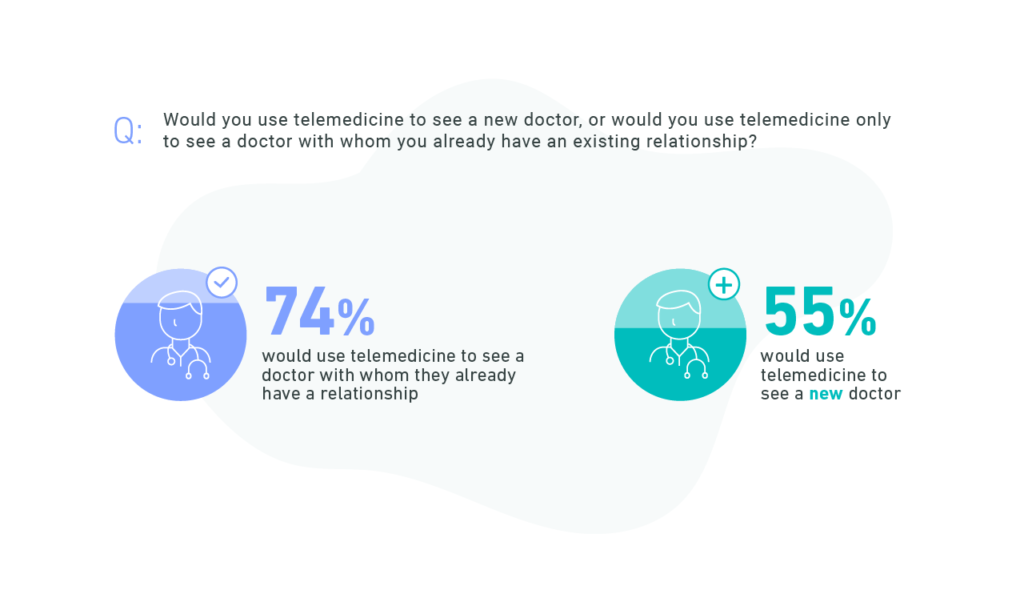
Improving wellness and compliance through telemedicine
Patients currently taking or looking for medications are confident that they can use telemedicine to get prescriptions filled or find out more about their options. Nearly all (93%) say they would use telemedicine to learn about and access new prescriptions while only 7% say they would be unlikely to use telemedicine for this purpose.
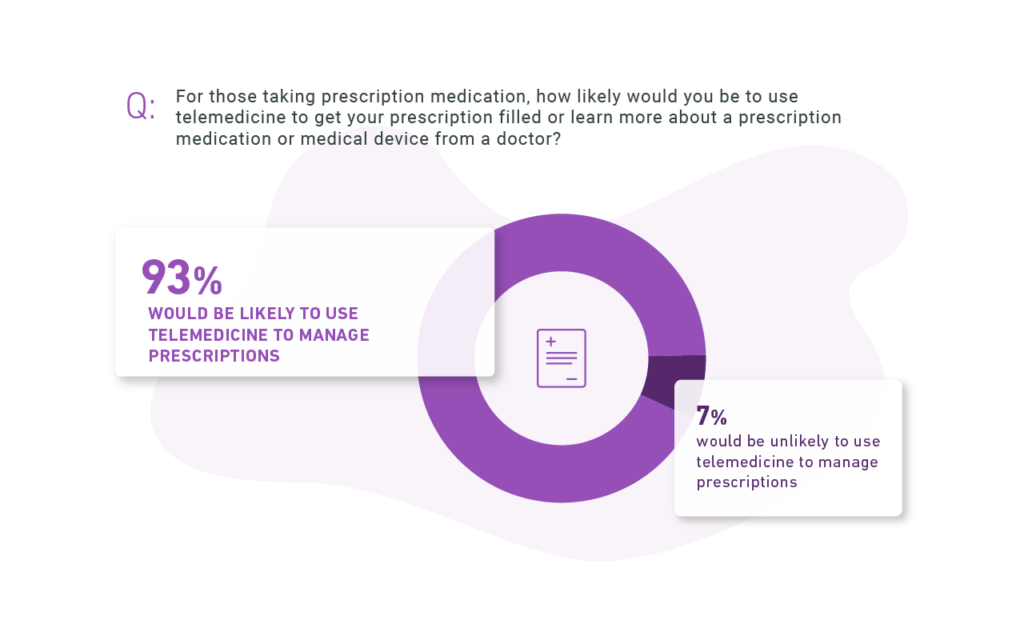
Furthermore, a whopping 91% of patients agree that virtual services would help them adhere to appointments and manage prescription refills, with just 9% dissenting. For physicians, this presents an immense opportunity to use telemedicine to improve compliance to medical and wellness regimens — to the benefit of local communities as well as the nation as a whole.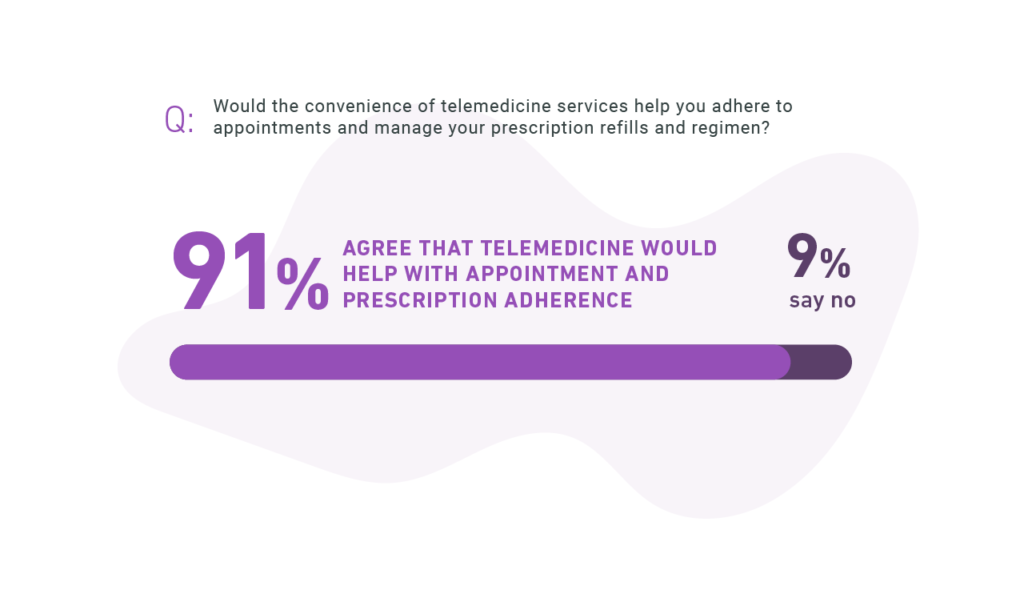
How to drive patient adoption for your telemedicine services
Patients are eager to use telemedicine — provided that the experience is intuitive, without a sharp learning curve or overly complicated steps. The top factors that would encourage a patient to use telemedicine are easy-to-use technology (69%), communication directly from the hospital or practice that such services are available (57%), the ability to schedule a telemedicine appointment online (47%), and appointment availability (also 47%).
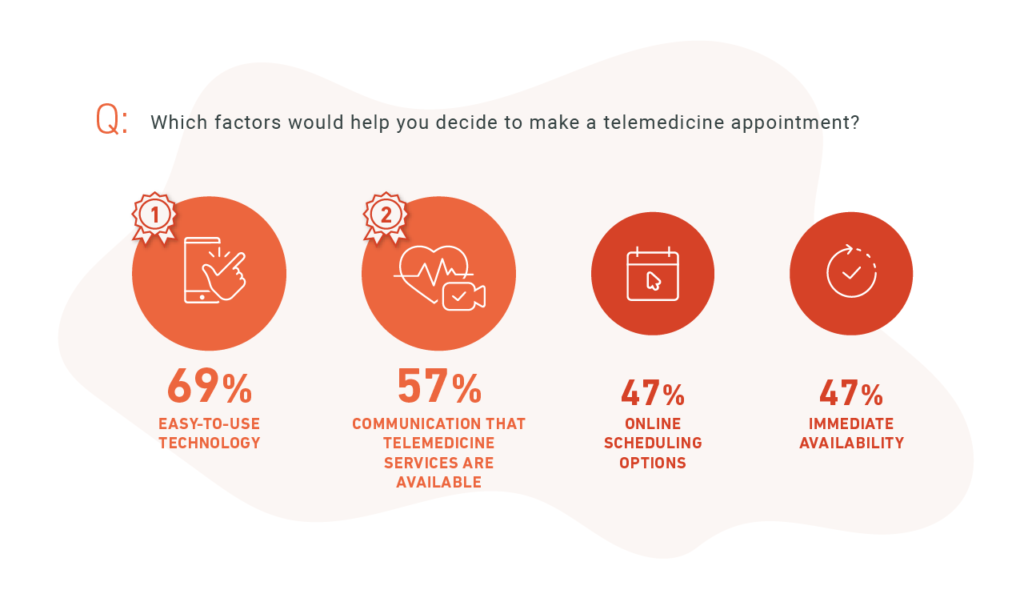
It’s also important to get ahead of any qualms a patient may have concerning telemedicine. Just under a third cite financial reasons (like insurance reimbursement and the cost of care) as the primary deterrents for using telemedicine while a quarter worry they wouldn’t receive the same level or quality of care. Far fewer patients (18%) are concerned about technical or security issues. Practices can circumvent these concerns through proactive communications and also leveraging the power of patient reviews. Encourage existing patients to review their positive experiences with the virtual appointments to help ease the possible pain points of patients new to telemedicine. Update your listings information on third-party sites to include FAQs about the insurance and financial aspects of telemedicine.
To make the most out of each virtual appointment, help patients get set up with the right technology. 68% of patients prefer to conduct virtual appointments using a smartphone, with the laptop coming in second place (48%). However, while using a smartphone has its advantages, such as the mobility and flexibility to show the physician things on their bodies or move around their homes, for some specialties — like mental health services, for example — the constant movement might become distracting. Think about the goals of each appointment and advise patients accordingly.
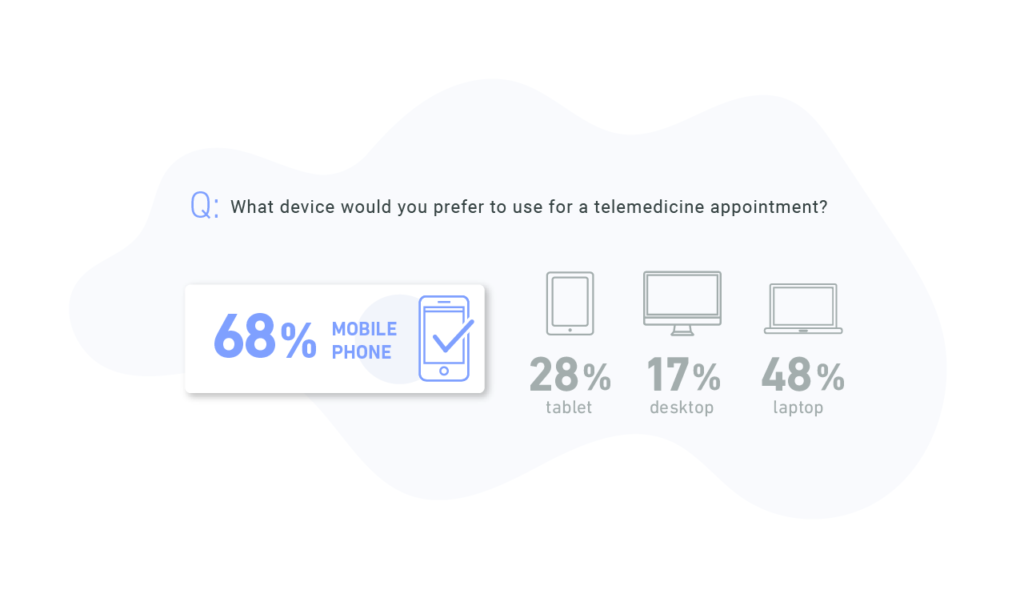
Telemedicine presents a pathway to post-pandemic healthcare
As states begin to reopen and we get the first glimpse of life after COVID-19, telemedicine will continue to be a critical part of healthcare delivery. First, it will help stem any sudden surges that hospitals and ERs may experience. While over a third of patients want to use telemedicine to seek treatment ASAP, 57% are eager to schedule an in-person doctor’s appointment as soon as COVID-19 resolves, lockdown is lifted, and it’s once again advisable to visit an office or hospital. For a second group of patients, who may still be wary of in-person visits after the pandemic but can no longer postpone their medical needs, telemedicine will be instrumental in providing care.

One thing is certain: Patients will continue to demand the convenience and personal attention of virtual care. It’s important that you begin to familiarize yourself with the technology and establish workflows that support you and your team now to facilitate a smoother transition once hospitals and practices can reopen to elective care.
To learn more about the results uncovered in our survey, download the full report here.